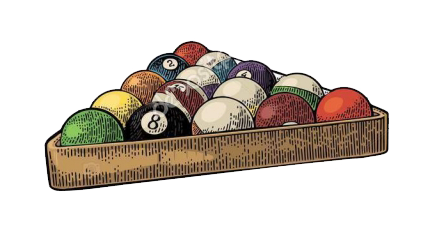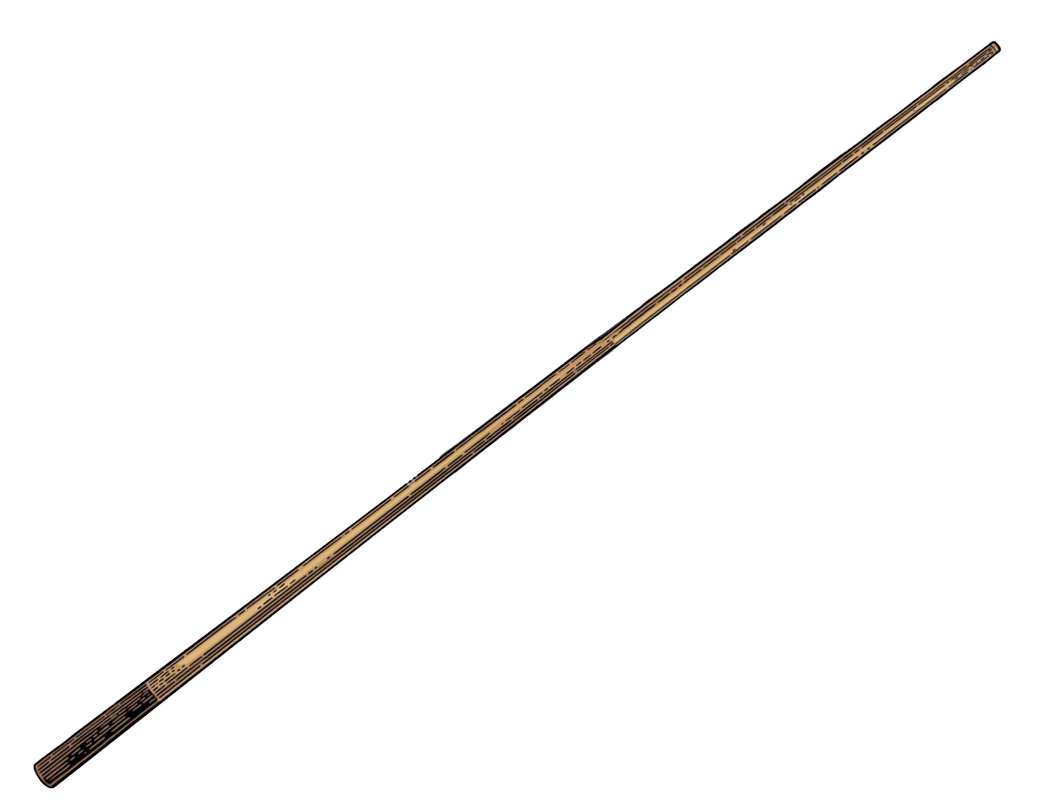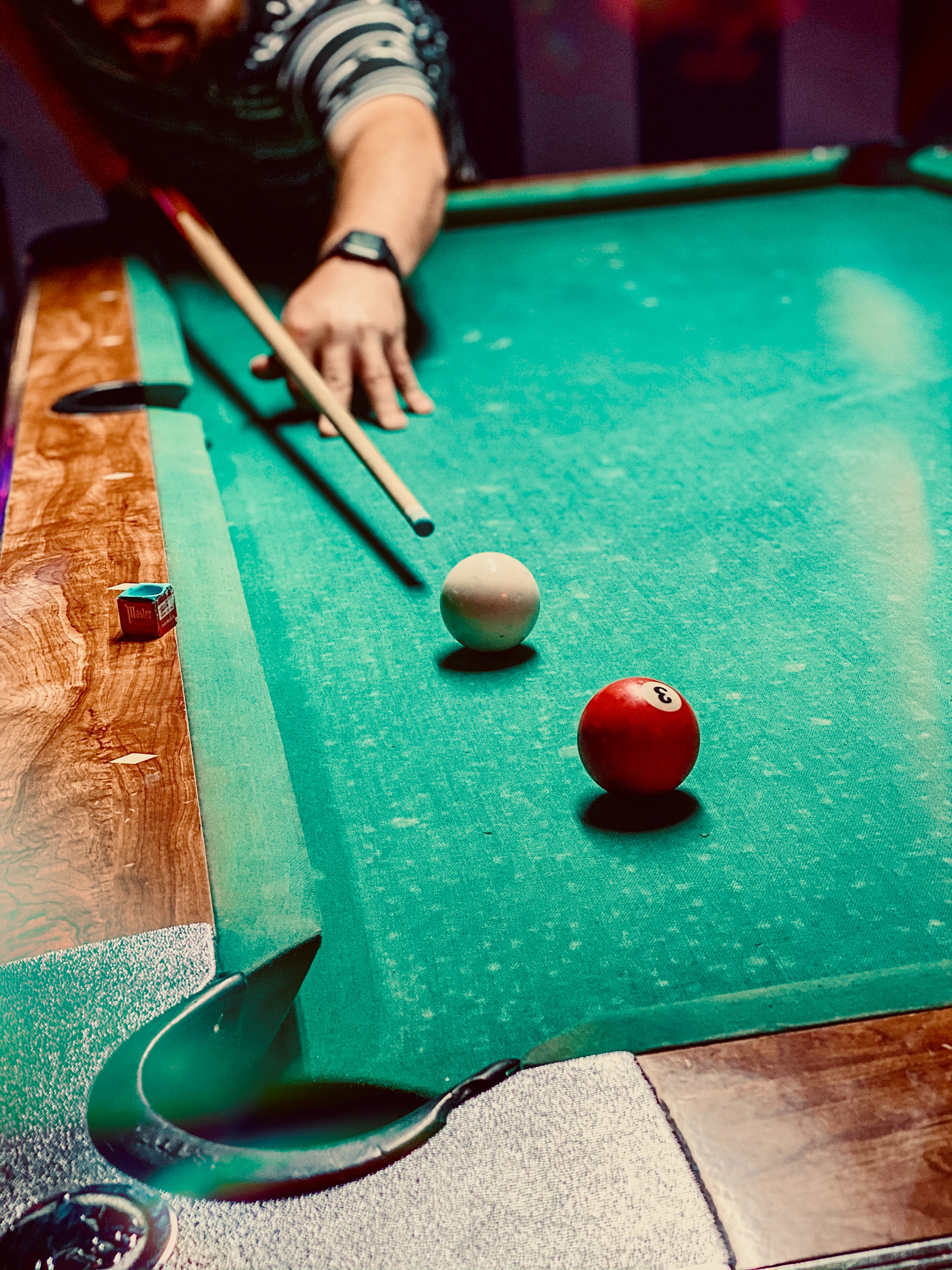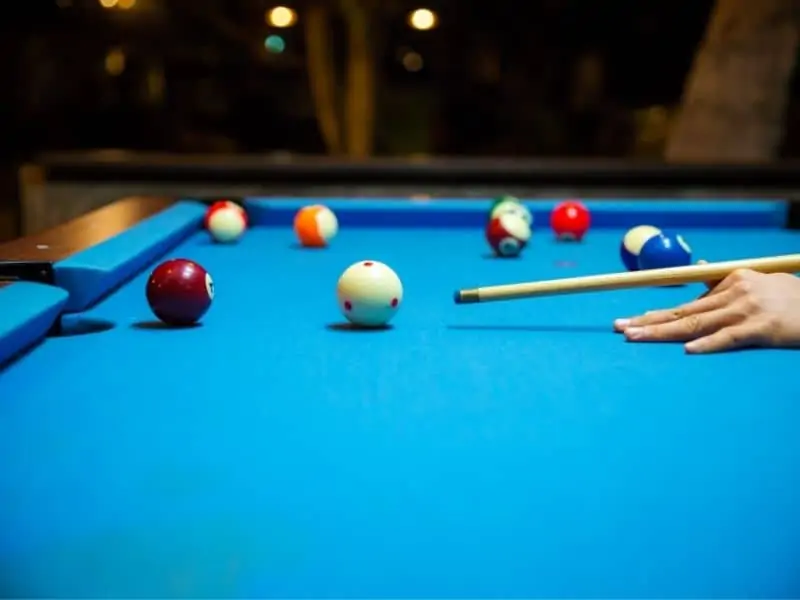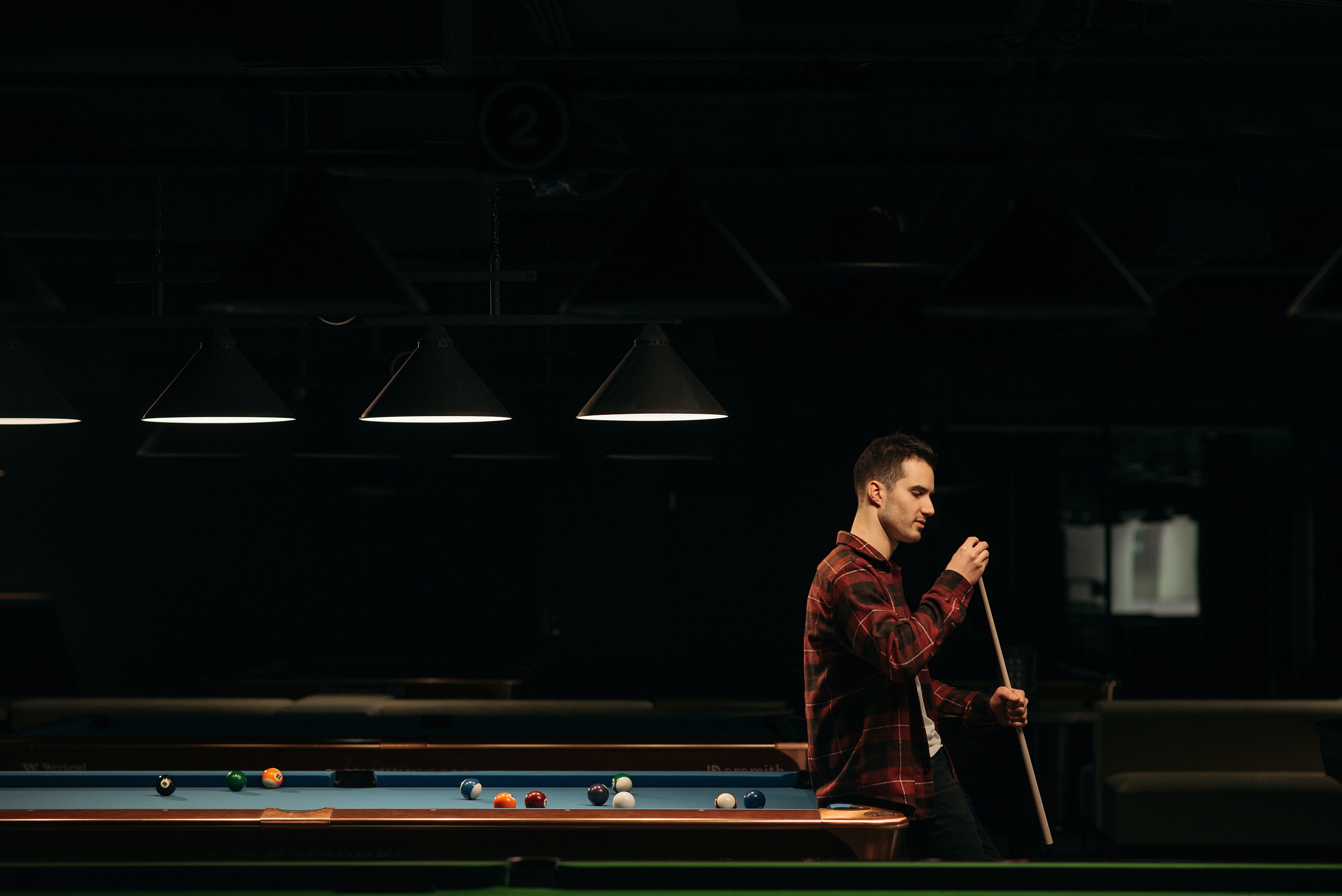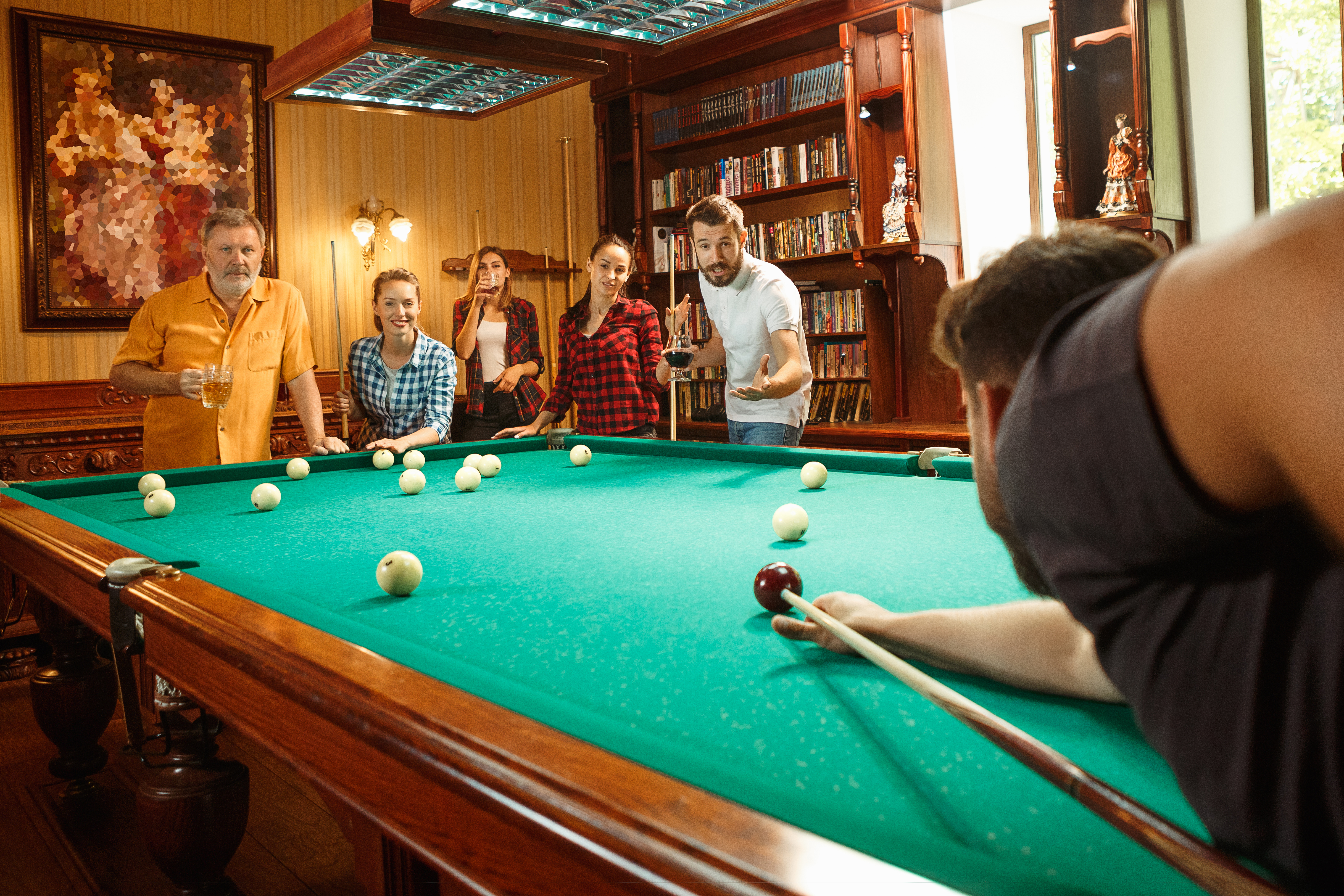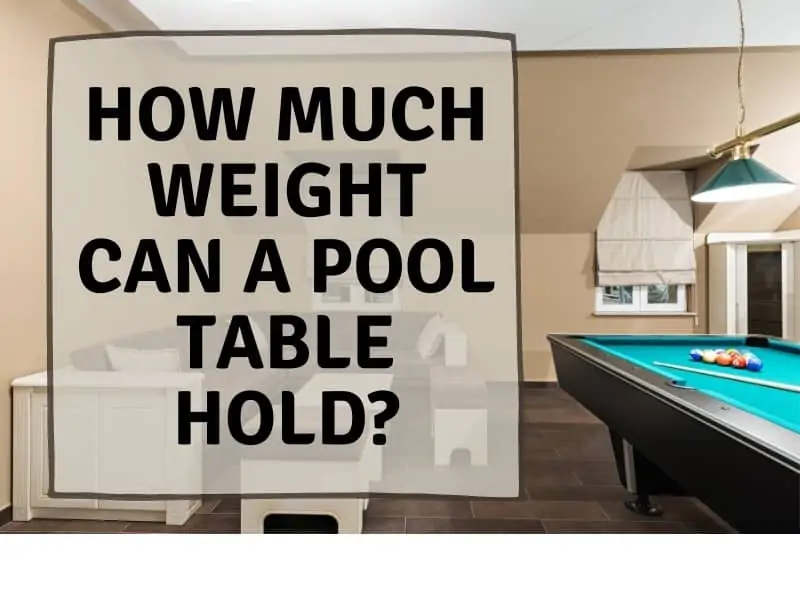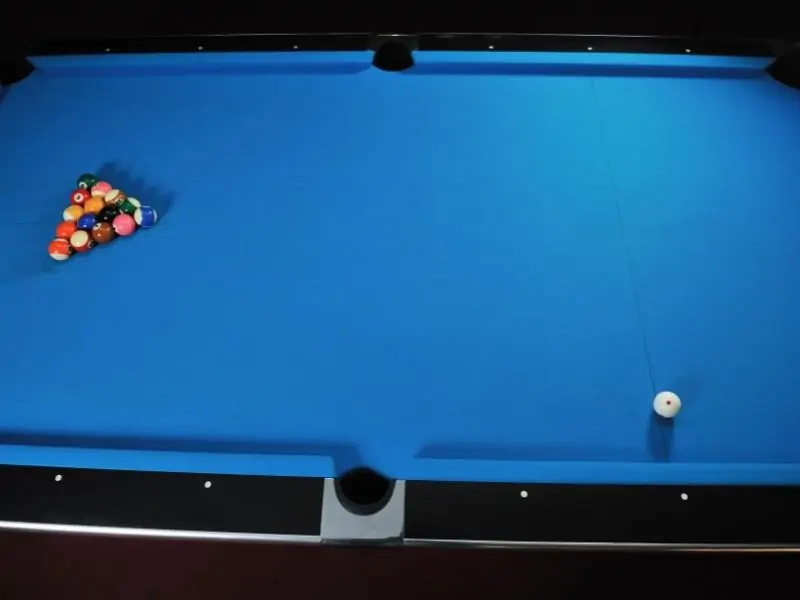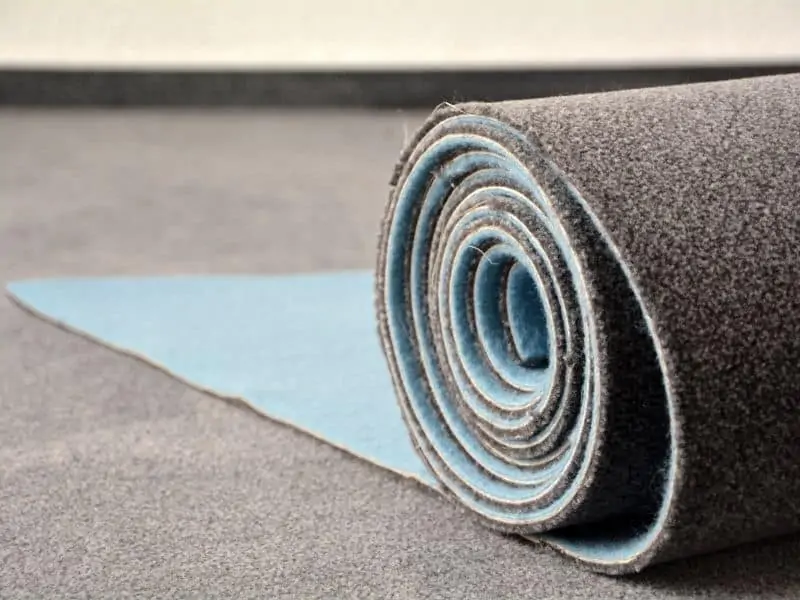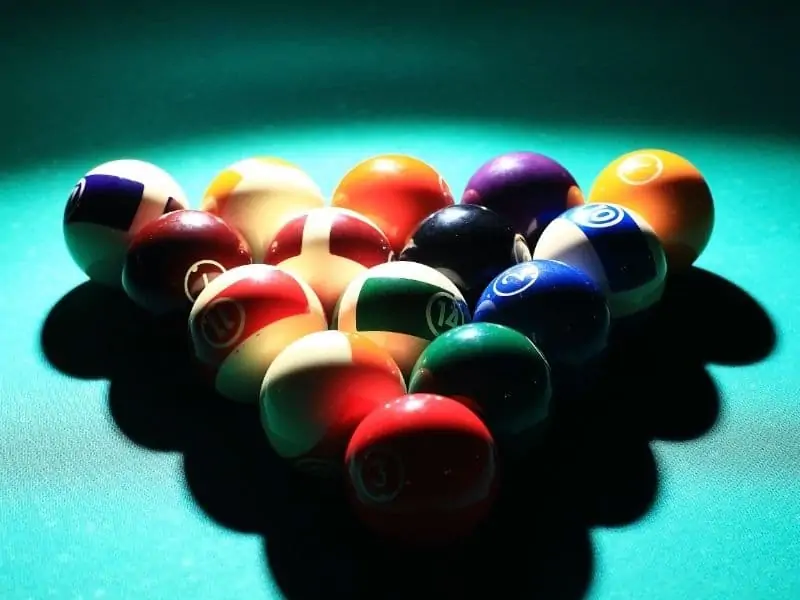There seems to be a bevy of different types of pool tables nowadays. There are several different materials used to make the bed, or playing surface, of pool tables. And if you’re in the market for a table, or simply curious about the different materials, you may be wondering: “There’s slate and there’s slatron; what’s the difference?” Well, I’m here to tell you.
Slate is a type of metamorphic rock. It’s heavy, long-lasting, and the only material used in pool tables for professional tournaments. Slatron is considered the best alternative to slate, but many people find it lacking. It’s made of particleboard covered by plastic to create a smooth surface. While most players prefer slate tables, slatron is ideal for certain situations.
Read on to discover more about the difference between slate and slatron pool tables.
A Brief History of Slate Pool Tables
Before slate was used in pool tables, wood was the primary surface for billiards. That was until 1826 when a man named John Thurston got the bright idea that flat rock would make a better playing surface. It wouldn’t warp like wood and would ensure a smooth, flat playing surface.
It didn’t take long before the billiard world caught on and never looked back. Well, kind of. The truth is that wood tables are still made today, even though slate is by far the more popular material for pool tables.
Slatron is a natural progression in the search for a lighter material that will play similar to slate.
A Brief History of Slatron Pool Tables
Ever since plastic started being used in many consumer goods, its uses have expanded almost beyond comprehension. It is only natural that it would be used in pool tables as an alternative to slate.
Slatron, sometimes called Permaslate, is simply a smooth layer of plastic on top of a piece of particleboard. It’s several times denser than medium-density fiberboard (MDF) and very smooth. But, no matter how far we come in our manipulation of plastic, it will never be quite the same as rock.
Why Players Prefer Slate

Most pool players who have played on both slate and slatron main complain that the “feel” of slatron tables is inferior. The balls seem to move differently. They don’t roll as smooth or as straight as they do on a slate pool table.
With the right equipment, you could surely measure the difference between how the balls behave on a slatron table vs a slate table, but most players don’t go this far. They simply know that playing on each table is different enough to facilitate a preference for slate.
But this is not to say that slate is the best table for everyone. After all, it’s a matter of feel for most. But, we’ll get to that in due time. First, let’s take a look at hard facts about each type of table.
Slate vs Slatron: Which is More Durable?
The question of durability takes on different levels of importance depending on who you talk to. Some people prefer durability over the “feel” of play, while others are more concerned with “feel” over durability. Either way, the question of which table is more durable is easy to answer:
Slate tables are many times more durable than slatron tables. Even though slatron tables have a layer of protective plastic on them, they can still warp. Although slatron is more durable than MDF, it’s still made of wood and plastic, neither of which are completely warp-resistant like slate is.
Spilling a drink on a slatron table can cause it to warp, and so can storing the table in a room where moisture is allowed to permeate, such as an unfinished basement or garage.
Of course, slate tables have frames made of wood, which are not susceptible to warping over time when exposed to moisture or humidity. However, the all-important playing surface is made of rock and won’t warp. It takes many years of exposure to humidity for a slate table’s frame to warp enough to affect play on the table.
Slate vs Slatron: Which is Cheaper?
For some consumers, the cost of the table is the most important purchasing factor. In most cases, slatron tables are significantly cheaper than slate tables. Of course, this depends on the seller, but it’s fairly rare to see a slatron table that’s as expensive as a slate table.
So, for those looking for a cheap table that will give them a few good years of play, a slatron table might be the best bet.
Slate vs Slatron: Which is Lighter?
Another big purchasing factor is how heavy the table is. Slatron tables are much lighter than slate tables— usually by hundreds of pounds. Many people prefer a light table that they can move easily if needed.
However, this is a double-edged sword, because a light table means a less sturdy and durable table. It also means that, if someone leans on it, it can move. Or if someone sits on the table, it may damage it.
However, with the proper care, a light slatron table is ideal for those who don’t want to deal with the hassles that come with a heavy slate table.
The Pros and Cons
Now let’s take a look at the pros and cons of each table to make things a little more clear.
Slate Table Pros and Cons
Pros
- Smooth and consistent play
- Durable, warp-resistant playing surface
- Used by professionals
- Can last a lifetime with proper care
- Heavy-duty construction
- Will take a lot of abuse
- Resists moisture exposure
Cons
- Heavy and hard to move
- Expensive when compared to other tables
- Requires professional installation for best results
Slatron Pros and Cons
Pros
- The most durable playing surface of non-slate tables
- Lightweight and easy to move
- Easy to install
- Good for recreational play
- Good for kids
- Relatively inexpensive
Cons
- Limited lifespan (between 5 and 10 years under the best circumstances)
- Light enough to move when bumped
- Susceptible to warping when exposed to moisture
- Play is not as smooth as on a slate table
- Lighter and less durable construction
Who is a Slatron Table Best For?
I mentioned earlier that slatron tables are ideal for some people. In this section, I’ll cover who exactly would best benefit from a slatron table over a slate one.
For Kids
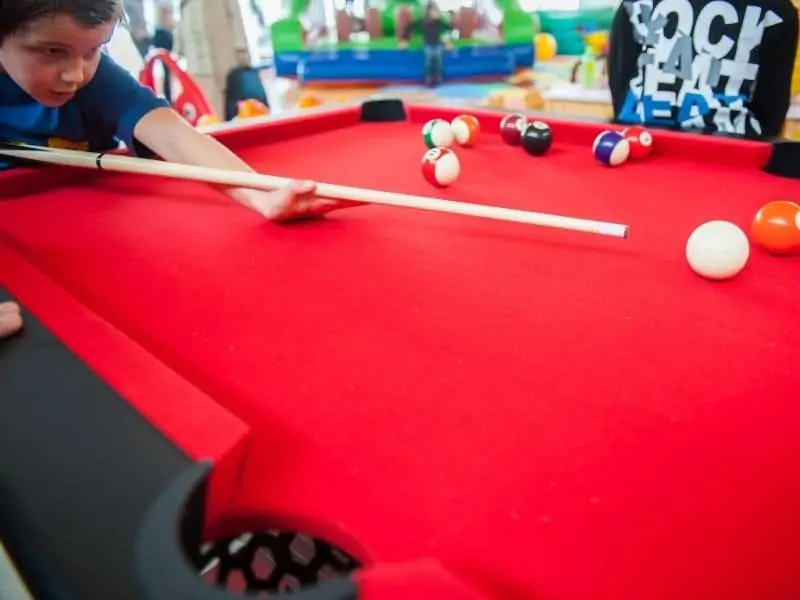
First off, slatron tables are ideal for kids. Unless your kids have aspirations to the professional pool circuit, a slatron table will do fine. You may even want to search for a slatron table that features other games like ping pong, air hockey, and foosball. There are plenty of these types of tables out there.
For Those on a Budget
If you’re on a budget and a slate table is just too expensive for you, consider a slatron table. As said above, they’re typically the most durable among the non-slate tables. And having any kind of table is usually better than no table at all.
For Those Who Move Often
Since slate tables are so heavy, they’re pretty hard to move. Although it’s possible to move a slate table without professional help, it’s not ideal. And hiring a professional to move your table costs a minimum of around $300. So, if you move often or you’re planning to move soon, maybe consider a slatron table. They’re much easier to move than slate tables.
For Recreational Play
This one is kind of tricky because most people buy pool tables for recreational play. It really comes down to how interested you are in developing as a player. If you’re just getting a pool table on a whim and aren’t really sure you’ll use it a lot, get a cheaper slatron table. You can always upgrade if you find a love for the game.
On the other hand, if you’ve been playing at bars or pool halls and want a table for your home, you should probably invest in a slate table. Most bars and pool halls have slate tables and you’ll definitely be able to feel the difference in play. And if you want to have fellow players over, they’ll surely appreciate a nice slate table over a slatron one.
Considering the Long-term Investment: Value Over Time
One essential angle to consider when choosing between slate and slatron pool tables is the long-term value that each type of table offers. While the immediate cost is undoubtedly an important factor for many consumers, considering the long-term investment can provide a clearer picture of the actual value a buyer is getting.
Slate Tables: A Long-term Investment
Slate tables are renowned for their durability, often lasting a lifetime when properly maintained. Although they require a larger upfront investment, the long-lasting nature of slate tables can make them a smart financial decision in the long run.
For example, let’s say a slate table costs $4,000 and lasts 50 years with proper care. Over that time period, the cost of the table per year is only $80. Moreover, slate tables tend to have a higher resale value, given their durability and preferred status among serious players. So, if you ever decide to sell the table, you can recover a significant part of your initial investment.
Slatron Tables: A Short-term Solution
On the other hand, slatron tables are generally less expensive upfront, making them a more attractive option for those on a tight budget or for people who aren’t committed to long-term ownership of a pool table. However, slatron tables tend to have a much shorter lifespan, usually between 5 and 10 years under optimal conditions.
To illustrate, a slatron table that costs $1,200 and lasts for 8 years comes to $150 per year. In this case, the cheaper table ends up costing more per year of ownership. Additionally, slatron tables often have a lower resale value due to their limited lifespan and the perception of inferior play quality.
Maintenance Costs
Another factor to consider in the long-term investment is the maintenance costs associated with each type of table. Slate tables, being more durable and less susceptible to warping, generally demand less frequent repairs. Slatron tables, however, may require more regular maintenance due to their susceptibility to warping and general wear and tear.
Making the Choice: Value Over Time
Ultimately, the choice between slate and slatron should take into account not only the initial cost but also the longevity and quality of the investment. For those who see pool as a lifelong hobby or who plan to use their table frequently, investing in a slate table might prove to be the more economical choice over time, despite the higher upfront cost. For casual players, or those who are not looking for a long-term investment, a slatron table may suffice.
By viewing the pool table as an investment and considering the long-term costs and benefits, buyers can make a more informed decision that aligns with their financial situation, playing habits, and future plans.
Best Slatron Table
Mizerak Donovan II 8-Foot Pool Table

For a slatron pool table, you can’t go wrong with the Mizerak Donovan II. This sleek black pool table makes a great modern addition to any game room. The metal frame and leg levelers make this table both easy on the eyes and easy to level.
This set includes two cues, two pieces of chalk, a racking triangle, a brush, and a set of billiard balls. This style table is also available in slate at a higher cost, if you like the modern look of the table.
Other Articles You May Be Interested In:
Best Pool Cues for the Money: Discover the top pool cues that offer great value without breaking the bank.
Pool Table in the Garage? Here’s What You Need to Know: Understand the essential considerations for setting up a pool table in your garage.
Break Cue vs Playing Cue: What’s the Difference?: Learn the key differences between break cues and playing cues to enhance your game.
How Much Does a Good Pool Cue Cost?: Explore the factors that determine the cost of a high-quality pool cue.
Are Mini Pool Tables Worth It? A Complete Guide: Read our comprehensive guide on mini pool tables and decide if they’re the right fit for you.
